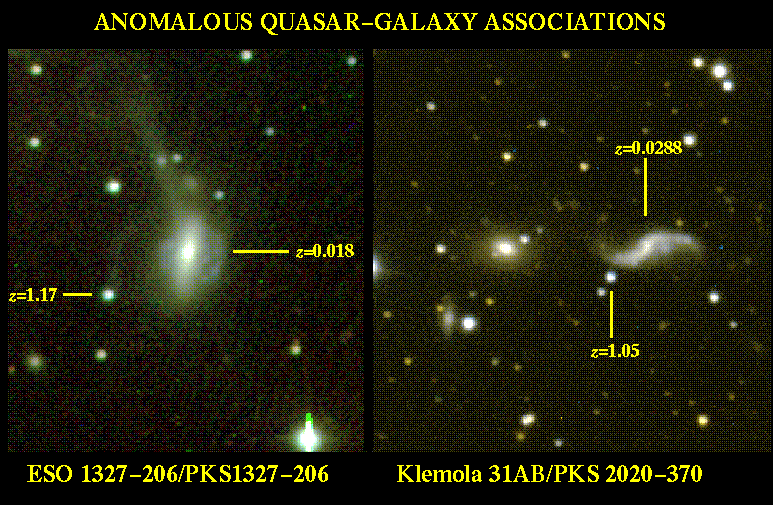
Much of our understanding of quasars in particular hinges on our knowing their distances and luminosities. Some astronomers have repeatedly suggested that quasar redshifts are different from ordinary galaxies, and that they may have some redshift component due to their peculiar physics and not to the expansion of the Universe. Their arguments have hinged largely on whether we see more close associations between quasars at large redshifts and galaxies at small redshifts than we would expect by chance. This montage shows the kinds of association under discussion.
The case of ESO 1327-206 and the quasar PKS1327-206 is one of the most flamboyant examples. The galaxy (at redshift z=0.018) is obviously disturbed, sporting loops, a long tail to the north, and knotty rings going over the poles of the inner region of the galaxy. The quasar (redshift z=1.170) is seen (at least in projection) along one of the loops (though not actually at one end; the loop can be seen to make a full circle). The apparent loop in the tail near the top is actually a reflection of a bright star outside the field of view. The other case is of the QSO PKS 2020=370 at z=1.048 and the galaxy group Klemola 31. Both spiral and elliptical galaxies are present close to the quasar line of sight, at z=0.0288. In both of these instances, absorption lines close to the galaxies' redshifts are seen against the quasars.
These are composites from BVR CCD images taken with the EFOSC system at the European Southern Observatory's 3.6m telescope at La Silla, Chile. Some of the stars have colored edges on one side due to slight focus shifts during the observations.